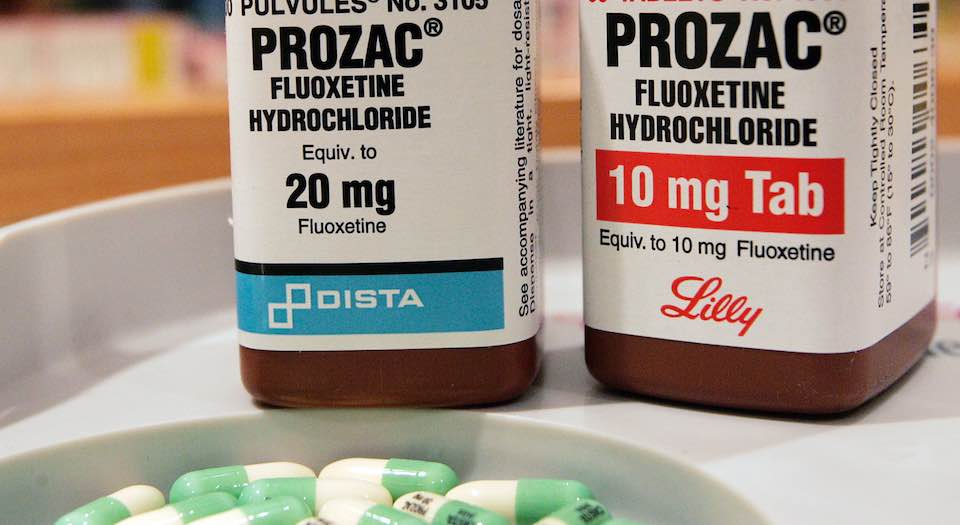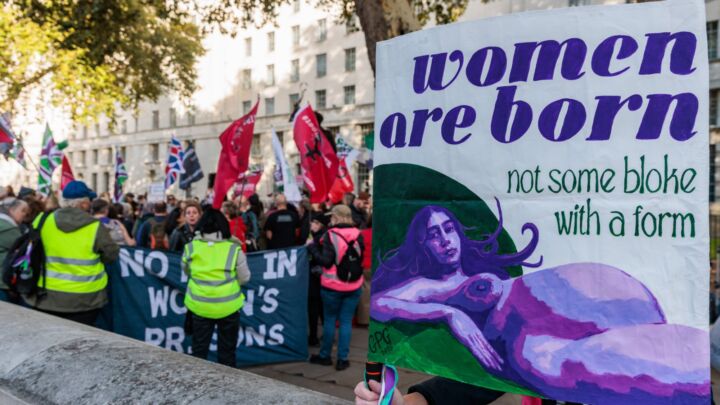
Long-read
On the therapeutic state
James L Nolan, Jr reflects on the deepening of therapeutic culture, state intrusion and victimology.
Want unlimited, ad-free access? Become a spiked supporter.
In 1998, five years into Bill Clinton’s presidency, James L Nolan, Jr, then an assistant professor of sociology at Williams College, wrote The Therapeutic State: Justifying Government at Century’s End. Nolan had noticed a shift in the US government’s response to issues like drug crime, seemingly moving away from punishment to treatment. In other areas too, such as education and civic law, the state had adopted a similar, increasingly therapeutic role, involving itself in the emotional wellbeing and private lives of its citizens.
Fast forward almost 20 years, and much of Nolan’s analysis is more pertinent than ever. The therapeutic state, as he saw it in 1998, has now become the norm, with therapy and counselling deemed a central state function, writ large in policymakers’ intensifying focus on mental health. From students demanding Safe Spaces to parents being told to ensure their children’s emotional wellbeing, when did we accept the therapeutic state? And is there any scope to resist it? The spiked review decided to see what Nolan himself thought of the therapeutic state today.
Ella Whelan: The Therapeutic State is now nearly 20 years old – what prompted you to write it back in the late Nineties?
James L Nolan, Jr: It started as a dissertation project when I was working on my PhD in sociology at the University of Virginia. I had read Philip Rieff’s The Triumph of the Therapeutic (1966), and some work by Christopher Lasch and others on therapeutic culture, and I was curious at the time as to the extent to which this pervasive feature of American culture was beginning to influence the modern state. I realised that this identifiable current in the cultural landscape would likely not just remain in the culture, but would begin to penetrate major institutions and, of course, important among these would be the state. In what ways, then, was the state appropriating, adopting and drawing upon the therapeutic idiom in its role vis-á-vis society? That was part of the genesis of the project, and then eventually I reworked the project and published it as a book in 1998.
Whelan: Many would argue that during the period you were describing – the late Eighties and Nineties – the state had become more punitive and more distant. Why do you think that wasn’t the case?
Nolan Jr: I think it’s a false dichotomy to make a distinction between therapeutic and punitive. In fact, the next two books I wrote after The Therapeutic State considered the role of the therapeutic in the criminal justice system. Reinventing Justice (2001) and Legal Accents, Legal Borrowing (2009) both explored the development and expansion of the problem-solving court movement. The first of these speciality courts were drug courts. And the drug court very much adopted a therapeutic orientation – oriented, that is, towards helping the drug addict and so forth. On the surface, this programme appears to have, if you will, a soft-helping orientation. Yet, arguably, it can be even more punitive and interventionist than the traditional adjudication process. The idea that the therapeutic and the punitive are somehow opposed to each other I think is not the most accurate way to think about it. They can actually work in tandem; the therapeutic can help to foster a punitive approach.
Whelan: What do you think elicited this change in government tack? Was there a definite political shift towards a therapeutic state?
Nolan Jr: I don’t necessarily see it as political; I actually see the genesis of this as cultural. In line with the dominant cultural current, the state is exercising, in the context of these criminal courts, a form of power over the people under its jurisdiction. I would argue that it draws upon those currents to give itself legitimacy, to provide the essential justification for its actions. And because this is a dominant current, that’s why the state draws upon it – it’s what’s available. So I see it less as a political explanation, than a cultural one.
Whelan: What does a therapeutic state mean? How pervasive do you think its intervention into people’s lives was at the time of writing The Therapeutic State?
Nolan Jr: I think it was very pervasive, and in The Therapeutic State I investigate its influence in a number of arenas of the modern state: in public schools; in both civil law and criminal law; in welfare policy; and in political rhetoric. It was very pervasive in the Nineties and, in a sense, it’s become even more pervasive.
It’s important to note, however, that it’s not just the state using a therapeutic idiom to justify its involvement in a number of areas of social life. It’s also something that society itself demands of the state. This is a point that the Italian sociologist Gianfranco Poggi argues in his work on the modern state: it is not just that the state grows and advances itself (which he argues is the nature of the modern state); it is also the case that society makes demands on the state. And I certainly see this. This is evident in the rhetoric and the public discourse that has developed since the publication of The Therapeutic State. People insist that the state meet the therapeutic needs of the citizenry.
Consider one anecdote that I find rather telling. In the aftermath of Donald Trump’s election victory in the US, there were numerous protests. At one of the colleges where students were protesting, they were carrying signs that demanded the school’s administration provide more therapists for students, as though this was the answer to the outcome of the election: ‘We need more therapy!’ This is an example of the way in which society invites a therapeutic intervention, not just the state adopting a therapeutic perspective to expand its authority.
Whelan: What is the relationship between the therapeutic state and what some describe as a culture of victimhood, where assorted groups and individuals in society demand that their grievances and suffering are recognised as such?
Nolan Jr: This is an important question. In The Therapeutic State, before looking at the ways in which this particular cultural understanding had infused itself into various dimensions of the modern state, I identified what I saw as the five defining features of therapeutic culture. And this was really drawing on the work of people like Rieff, Lasch, Peter Berger, Robert Bellah, Alasdair MacIntyre and others. One of the important features of the therapeutic culture that I identified is victimisation – that is, a kind of victim mindset. Victimology is a narrative that is central to the therapeutic idiom: understanding oneself as a victim of one’s disease, pathology, addiction, or disorder. It is part of a therapeutic understanding of the world.
One also finds this discourse in the narratives of identity politics, where people understand themselves to be victims of oppression by a dominant group. Interestingly, it’s also a narrative one finds among groups that would not normally be understood as historically oppressed. For example, a recent article in the New York Times notes the manner in which the so-called Trump demographic of the disenfranchised white working class themselves employ the victim ideology. That is, they see themselves as victims of discrimination from the media and other cultural elites. Again, the victim mindset, which is central to the therapeutic idiom, is found elsewhere, not just in discourses about disease, but in other contexts. And importantly – perhaps counter-intuitively – the victim mindset is used as a means by which to assert power. So if one can claim one’s credentials as a victim, that then gives a person a certain kind of authority. This is interesting, isn’t it? That by claiming victimhood, one is then given power. This seems to be the way in which the invocation of victimhood plays out in practice.
Whelan: But how much do you think this has changed? You said that the therapeutic state grew out of a cultural demand for a system of government which would perform that therapeutic service. And now we have a generation who have grown up under a therapeutic state, who are extremely dependent on it. Have they become the Frankenstein’s monster of the therapeutic state?
Nolan Jr: I do think it’s grown and some of the defining features of the therapeutic state have now become normal, seemingly commonsensical, or taken for granted. In The Therapeutic State, I talk about self-esteem. Self-esteem has become an accepted idea – it’s regarded as an unquestioned good. In schools, part of the educational process is to inculcate high self-esteem. Low self-esteem is regarded as a major problem among underperforming students. In my discussion of the therapeutic culture, I talked about what at that time was really just an emerging phenomenon – that is, the widespread use of pharmacological remedies to treat various psychological ailments. I talked about Ritalin, Prozac and other anti-depressant drugs, and those have just absolutely mushroomed since I wrote the book. This represents one measurement of the increase in a therapeutic sensibility.
The number of Americans who use some form of anti-depressant has grown dramatically, by approximately 400 per cent since the late 1990s. Currently, around 11 per cent of the US population, over 12 years of age, have been prescribed Prozac, Zoloft, Paxil, or some other type of anti-depressant drug. In the case of attention deficit hyperactivity disorder (ADHD), at the time I wrote the book it was estimated that 3.5million Americans had ADHD. Within the past three years, 16.3million Americans have been diagnosed with it. Something like 16million Americans have been prescribed Adderall, which followed Ritalin as one of the most popular forms of treatment for ADHD. This is just one indication of the growth of therapy culture.
Again, what one finds is that it’s not necessarily forced upon individuals, but it’s something that individuals themselves demand. They want to be prescribed these drugs, and on some college campuses, over 50 per cent of the students are on one of these drugs. I do think therapy culture continues to expand, but it’s not just the state that forces this – there is a demand from society to be treated in this way.
Whelan: Where does that demand come from? Yes, on the one hand, the scale of medicalisation is shocking. But on the other hand, it seems to be that it is certain sections of society (you mentioned college campuses) that demand therapeutic services from the state. Whereas other sections of society really have no truck with that idea, and maintain a hostility to the state.
Nolan Jr: I think part of it is a cultural argument. There used to be available to individuals in society different explanations for life’s difficulties and forms of suffering. The instinct wasn’t to blame someone else for one’s difficulties and to seek a therapeutic remedy. Rather, there was an understanding that suffering was a part of life, not an unusual or unexpected experience. Within the older theodicies, one could make sense of suffering in a different sort of way, and in such a way that someone wasn’t to blame for it, someone didn’t have to provide therapy, someone didn’t have to pay for it. I do think that shifting cultural understandings of the person and of suffering are part of the explanation.
I also think that, as it concerns certain disorders like ADHD, it may not just be a shift in cultural understandings. There may actually be changes in behaviour. The changes in behaviour are in part a consequence of the new technologies that we employ. The ubiquity of the screen and the kind of stimulation that one receives from a smartphone or television or the internet creates a situation whereby children may, in fact, find it difficult to sit still in a classroom because they’re used to the fast and multiple stimuli of the screen. Having difficulty paying attention, then, might be a real thing. But it’s not a kind of genetic disease. It’s something that has been shaped by the social environment such that a pharmaceutical remedy may not be the most appropriate intervention.
Whelan: Do you think we’re still living under a therapeutic state?
Nolan Jr: At the end of The Therapeutic State, I talk about the therapeutic in relation to a utilitarian orientation, one that places a great deal of emphasis on things like efficiency. Efficiency, instrumentalism and utilitarianism could be seen as a more classical description of modern society. In Weberian terms, it’s a kind of rationalisation – a move towards a utilitarian mindset. So I took up this question: how do you reconcile that with the therapeutic? Again, just as we can think of the therapeutic and the punitive as more complementary than antithetical, we can think of the utilitarian and the therapeutic as two sides of the same coin.
Take the area of therapy. In as much as the number of people who are diagnosed with some kind of addiction, disorder, pathology has increased (and it has increased), the way that individuals are treated now is less oriented toward psychotherapy and more oriented towards the prescription of drugs. Instead of the human contact one experiences talking to someone in the context of a therapeutic relationship, the psychiatrist often plays the more limited role of making a diagnosis and prescribing medication. This is more efficient, less costly, but it also represents a view of the human person as more of a machine. You prescribe the human these chemicals to fix something and so in that sense, it’s much more utilitarian, mechanistic – and less therapeutic. And yet in both cases, it’s a therapeutic intervention, but seen in the context of an understanding of what’s most efficient. So I see these two orientations working in tandem. A commitment to efficiency is joined with a therapeutic orientation. The treatment may appear less therapeutic because there is less of a traditional therapeutic relationship. However, still present is an essential therapeutic understanding, but one coloured by a commitment to what is most efficient.
Whelan: It’s very interesting that you describe a mechanistic approach to humanity. How did the move towards a therapeutic state change the idea of the citizen? Did it destroy the notion of human agency and responsibility?
Nolan Jr: Well, that’s right. Sometimes when I discuss this with my students, we read Brave New World. And that book is often contrasted with the other classic dystopian novel Nineteen Eighty-Four, where citizens are constantly surveilled by Big Brother and an oppressive state. But one of the issues in Brave New World and the use of soma (which many have compared to drugs like Prozac) is that the ‘citizens’ want soma – they demand their soma in the same way that people today ask for anti-depressants and other therapeutic remedies. I suppose, on one level, yes, it does undermine agency. But it’s not understanding the state as necessarily in opposition to, or in an oppressive relationship with, the citizen. Citizens ask that the state meet their therapeutic needs, which is a different way of thinking about the state than in an Orwellian sense.
Whelan: The difficulty is that you so often see the state making advances into people’s private lives, with no desire from the public for such pervasive intervention. For example, policymakers have mooted ‘healthy towns’ in the UK, which would control tenants’ health in exchange for housing. Doesn’t that seem to be extremely Orwellian?
Nolan Jr: In as much as I’ve emphasised that society makes these demands on the state, it is also the case that the state itself expands. It expands itself according to dominant cultural understandings. That’s what makes this expansion look less alarming than one might anticipate, because the state is advancing itself along the lines of a basic and accepted understanding of the human person. I think you’re right, the state does penetrate more deeply into areas of social life than it did previously, but it’s able to do so because it justifies itself according to dominant cultural understandings.
My book Legal Accents, Legal Borrowing, is a comparative work looking at the development of therapeutic courts in the US and five other countries where these court programs were transplanted. One of the places I studied was England. I found that in the UK, where some judges were acting as therapists and in fact increasing their power according to their therapeutic role, interestingly it was viewed as less acceptable than it was in the US. In the US, there are typically therapeutic communities as part of the programme – AA, Narcotics Anonymous groups, and the like. This is very typical in the US. In the UK, these types of therapeutic groups are much less acceptable. More acceptable instead is the role of a doctor prescribing something like methadone, as a form of treatment. So there was less cultural acceptance of therapeutic modalities than in the US. I suspect you think that might have changed (or is beginning to change) in the UK?
Whelan: Like you say, it’s definitely a cultural shift. The erosion of communal life in its many forms, from church to politics, has meant that we now almost have one relationship: with the state and its agencies. And this involves every aspect of our private lives. It’s actually quite shocking sometimes to see how reliant the young generation is on the state.
Nolan Jr: Just last year I published a book called What They Saw in America, which looks at four foreign visitors to the US and compares what they saw. The first of these is Alexis de Tocqueville, and one of the features of American society he was so impressed with was our voluntary associations – think civic life, and our ubiquitous joining habits. Contemporary scholars who draw on Tocqueville’s ideas, people like Robert Putnam in his book Bowling Alone (2000), and Robert Bellah et al in Habits of the Heart (1985), have concerns about the decline of associational life – of individuals coming together in these kind of intermediary groups. One of the results of this decline is what you’re referring to – the isolated individual who is not connected to society through these associations and is therefore much more susceptible to a certain kind of relationship to the state, rather than being in a relationship to a local community or groups which stand between the individual and the state. Tocqueville worried that such isolated individuals would be vulnerable both to the tyranny of the majority and to centralised state power.
Whelan: Obviously some things have changed, but as we’ve discussed, much has stayed the same or worsened. Do you think that the therapeutic state poses a threat to individual agency, and thus a progressive notion of society? Is it something that should be raged against?
Nolan Jr: I do think it’s something that we should worry about. Another feature of the therapeutic state I talk about is the ethic of emotivism and how appeals to subjectivity or to one’s emotions have in many ways become the dominant form of discourse. This emphasis on emotions undermines reason and the ability to engage in civil discourse based upon reason. Increasingly what has the most cultural salience are appeals to one’s emotions, to the depths of one’s feelings. People are thus deterred from coming together to talk about major societal problems through appeals to reason. Instead, the one who can express the deepest emotional outrage wins the day. I think that is a really worrying place to be.
James L Nolan, Jr is professor of sociology at Williams College, Massachusetts. He is the author of many books, most recently What They Saw in America: Alexis de Tocqueville, Max Weber, GK Chesterton, and Sayyid Qutb (2016).
Ella Whelan is assistant editor at spiked.
Picture by: Getty Images.
You’ve read 3 free articles this month.
Support spiked and get unlimited access.
Help us hit our 1% target
spiked is funded by readers like you. It’s your generosity that keeps us fearless and independent.
Only 0.1% of our regular readers currently support spiked. If just 1% gave, we could grow our team – and step up the fight for free speech and democracy right when it matters most.
Join today from £5/month (£50/year) and get unlimited, ad-free access, bonus content, exclusive events and more – all while helping to keep spiked saying the unsayable.
Monthly support makes the biggest difference. Thank you.







Comments
Want to join the conversation?
Only spiked supporters and patrons, who donate regularly to us, can comment on our articles.